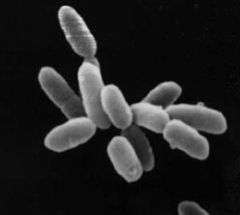Phototrophic prokaryotes
Phototropic prokaryotes are bacteria or archaea that obtain energy from light. phototropic prokaryotes may utilize a variety of carbon sources, depending on the metabolic pathways available to the bacterium. Most phototropic organisms are also autotrophs, obtaining carbon from atmospheric carbon dioxide in a process called photosynthesis.
Archaea
Most phototropic prokaryotes are bacteria, but some have been identified as members of archaea. Haloarchaea do not have chloroplasts or chlorophyll, and instead rely on the protein bacteriorhodopsin as proton pumps, capturing light energy and using it to create a proton gradient that is subsequently converted into chemical energy.
Bacteria
Most phototropic prokaryotes are bacteria. They do not contain chloroplasts, and their photosynthetic chemicals are loose in the cellular membrane. Bacteria other than cyanobacteria depend on pigments other than chlorophyll to complete photosynthesis. These are referred to as bacteriochlorophylls, and they do not produce oxygen.
Cyanobacteria
Among phototrophic bacteria, the phylum cyanobacteria are perhaps the most well known, and probably the most important. They are blue in colour, contain chlorophyll, produce oxygen and are closer than any other bacteria to plant-style photosynthesis; in fact, it is believed that plants evolved directly from cyanobacteria. Chloroplasts are revealed as descendants from cyanobacteria and it is theorized that cyanobacteria were adopted as organelles by early eukaryotes through endosymbiosis.
Cyanobacteria are responsible both for the oxygenation of the earth in what is now known as the Great Oxygenation Event, and for the photosynthetic capabilities of plants wherein organelles known as chloroplasts harvest light energy used by the plants in photosynthesis.
Gallery
-

Cluster cells of Halobacterium